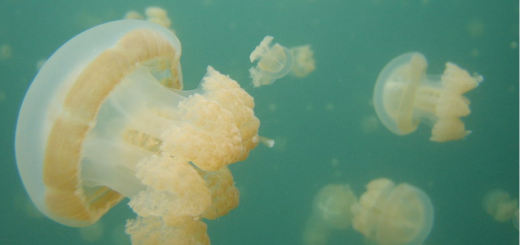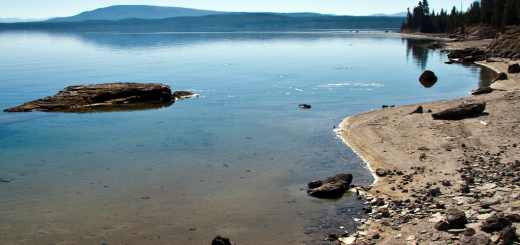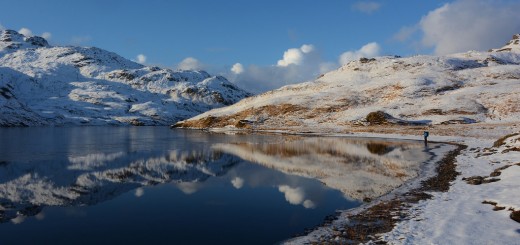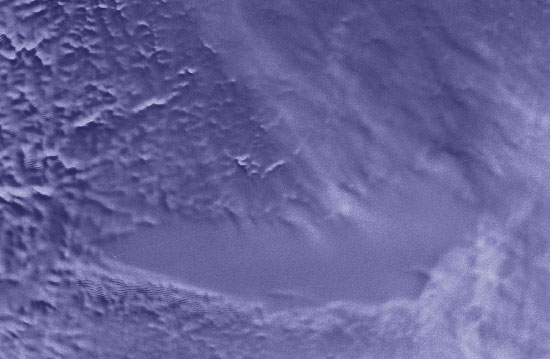Arctic Lake Sea Tomatoes
4The world is strange enough these days without softball-sized, cyanobacteria-producing “sea tomatoes.” But hey, they’re a thing. And if you’re immediately awestruck by how they could even exist in the first place, you’re not alone.
Scientists at Dartmouth College have been studying in Arctic lakes for some time trying to dissect the origins of these toxin-oozing balls, using a host of methods. Luckily, they’ve made some headway into the mysterious existence of the globs.
The sea tomatoes, which is a local nickname for them in Greenland, aren’t tomatoes at all, researchers say. Instead, they are large masses of cyanobacteria, comprising a type from the genus Nostoc that form spherical, gelatinous colonies.

Sea tomatoes cover the bottom of Sea Tomato Lake. (Credit: Jessica Trout-Haney / Dartmouth IGERT)
The truly odd thing, scientists found, was that some of the lakes in their study area had very few of the colonies while others had thousands of them. This was over the course of 19 lakes stretching from the mouth of Sondre Stromfjord to the Greenland Ice Sheet, a region called the Kangerlussuaq area.
To study these remote lakes, researchers at the school built a custom vessel tailored to their needs. The ship was made using two modular kayaks, a few bungee cords, plywood and a lot of Velcro. Check it out below:

Custom research vessel built for the expedition, affectionately nicknamed the Sea Chickadee. (Credit: Jessica Trout-Haney / Dartmouth IGERT)
Underwater sonar devices were mounted to the back of each boat, with researchers paddling across the lakes under study to map their shape and size. In addition to those measurements, data on pH, conductivity, dissolved oxygen and temperature were also collected.
Biological samples of lake communities, like zooplankton, phytoplankton and the sea tomatoes were also gathered so that scientists could learn more about the species composition of each lake. The specimens were then assessed for nutrients and toxins.
Researchers identified three forms of the cyanobacteria balls in the lake-filled area. The one believed to be most abundant there is Nostoc pruniforme, which is smooth and spherical in shape. Of the other two, there is what the researchers believe to be Nostoc zetterstedtii, which is more irregular in shape, bumpy and with smaller, dark nodes. The last type of sea tomato scientists found has yet to be fully identified, but is believed to be related to the other two. It has much tinier, rough spheres that bind together in dense colonies.

Aggregation of the two Nostoc species together. (Credit: Jessica Trout-Haney / Dartmouth IGERT)

Sea tomato species Nostoc zetterstedtii. (Credit: Jessica Trout-Haney / Dartmouth IGERT)

An unknown species of sea tomato. (Credit: Jessica Trout-Haney / Dartmouth IGERT)
In all the lakes sampled, researchers found microcystin levels. Though the concentrations were low by health standards, they are still relatively high for Arctic lakes, thought to be pristine when compared to other freshwater bodies around the world. That long-held assumption, and its outright disproval by the presence of the sea tomatoes, highlights just how important it is to put things to the test.
Not surprised by the existence of sea tomatoes? Know of other extreme lifeforms living in lakes? Please consider leaving a comment to share your thoughts!














[…] Lake Scientist piece on Jess’s work […]
I believe we found these in Yellowstone Lake. Is that possible?
[…] particularly unique about these lakes is the presence of sea tomatoes. This is a local term for red gelatinous spheres of toxic cyanobacteria colonies. They are one of […]
[…] On reaching the top we rounded the corner before descending back down to run along side the sand drift desert – now covered in a perfect undisturbed layer of snow. The next milestones to tick off would be the plane wreck site on our right , sea tomato lakes on our left (also covered in snow!) and then Sugar Loaf mountain ahead at around 35km. Sea tomatoes are tennis ball sized blobs of cyanobacteria which blossom in the lakes in the summer for some reason (more information is here). […]